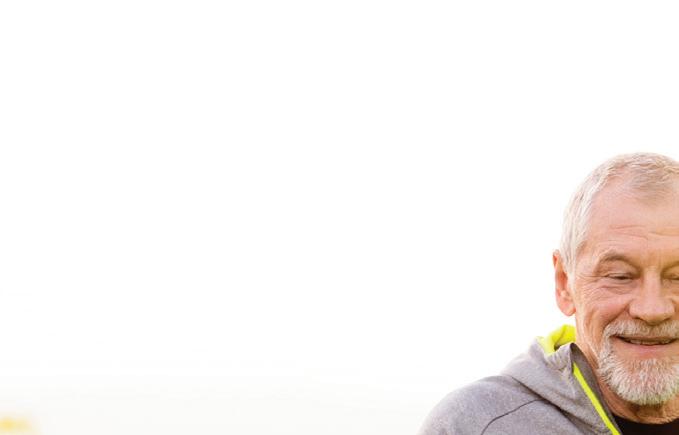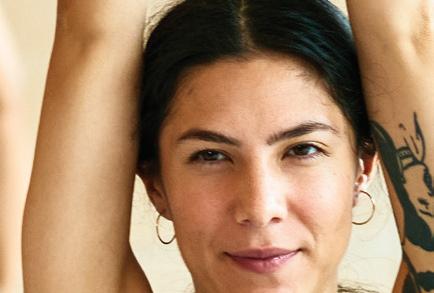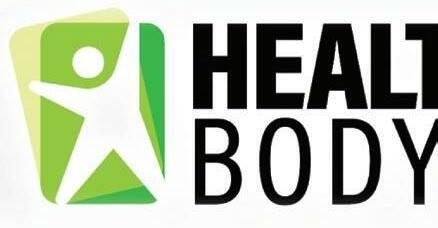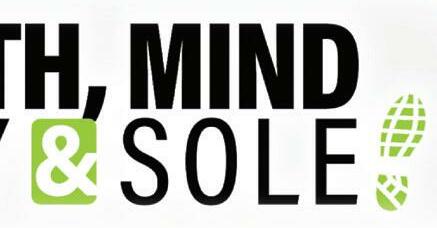



































Getting older brings about many physical and emotional changes. Wrinkles are one such physical change that is widely associated with aging. Some people begin fighting wrinkling long before their first wrinkle even appears. A poll of 2,000 women conducted by DermStore found that around 30 percent of women under 35 regularly



use anti-wrinkle products. The average millennial user starts at age 26 compared to the average currently 55-year-old woman, who began using wrinkle-reduction products at around age 47. As skin ages, its natural tendency is to become less elastic. However, other factors also contribute to the formation of wrinkles. Understanding the






main culprits behind wrinkles can help people combat them more effectively.
• Exposure to UV light: The Mayo Clinic says that ultraviolet radiation speeds up the natural aging process and is the primary cause of early wrinkling. UV from the sun can break down the supportive connective tissue in the skin, which includes collagen and elastin fibers. Using sunscreen and staying out of the sun as much as possible can help.


• Exposure to


pollution: Pollution can cause free radical damage that contributes to wrinkling, advises Maral Skelsey, M.D., director of the Dermatologic Surgery Center of Washington. Other data indicates those who live in urban settings have more wrinkles and age spots than those who live in rural areas.
Washing off skin contaminants from the air each day may be beneficial.

• Smoking: The contaminants in cigarette smoke can damage the skin,
promoting wrinkles, states the skincare company Nivea. Also, dragging on a cigarette purses the lips and can form deep wrinkles around this area of the face.
• Poor diet and stress: Stress and eating unhealthy foods, such as a diet high in sugar, may contribute to premature aging of the skin. According to Kristina Goldenberg, MD, board-certified dermatologist of Goldenberg Dermatology, after sugar is ingested it goes through a process called
glycation, which involves binding to different proteins in the body. These proteins include collagen and elastin. By binding to these building blocks of the skin, sugar weakens collagen and elastin and will lead to an appearance of fine lines and wrinkles. Stress can increase cortisol levels that affect the skin’s ability to stay hydrated and elastic. Avoiding wrinkle triggers and following a dermatologist’s advice on skincare products and care can help people stave off wrinkles.

Caregivers come from all walks of life, even if people may be most likely to associate caregiving with the paid professionals who work as home health aides or in nursing care settings. However, many caregivers are informal, family caregivers who are not paid for their services, but step in to help someone they love. Here’s a look at some of the numbers regarding family caregivers, courtesy of the National Alliance for Caregiving, AARP, Gallup-Healthways Well-Being Index, Respect Care Givers, and the career experts at Zippia.
• 53 million: the number of Americans who are providing unpaid care to a family member or a friend.
• 9.5 million: amount by which caregiver numbers increased between 2015 and 2020.
• 1 in 5: the number of Americans
who are caregivers.

• 22: the percentage of caregivers who are middleaged.
• 46: the average age of an employed caregiver.
• 70: the percentage of working caregivers who suffer workrelated difficulties due to their dual roles.
• 34.7: the number of hours employed caregivers work each week, not including caregiver services.
• 70.7: the percentage of family caregivers who are women (29.3 percent are men).

• 88: the percentage of caregivers residing in urban or suburban areas.
• 69: the percentage of caregivers caring for parents or parents-in-law. Fifty-one percent care for a spouse or partner.
 BY ROBYN GOLDFARB, WEALTH OF GEEKS
BY ROBYN GOLDFARB, WEALTH OF GEEKS
Can lack of work productivity be blamed on stress about money and retirement? A new report says yes.
Nearly seven in 10 Millennials and Generation Z Americans report that financial stress has negatively affected their productivity at work. That's according to a survey released by the National Association of Personal Financial Advisors. About 87% of working Americans reported feeling stressed about their finances, and nearly one-third (32%) reported spending half an hour, or more a workday thinking about their finances.
David Edmisten, certified financial planner for Next Phase Financial Planning, says slowing down and evaluating your finances can reduce money stress. "A lot of people feel stress from their finances, and higher costs due to inflation are making that pressure more severe recently. Taking stock of your current financial situation is important to understand where you stand. Then, take action on the items that are within your control. You can look at ways to cut expenses."
The same survey reports that 74% of working adults sense that their coworkers stress about their finances due to an increase in inflation.
Further, almost seven in 10 (69%) respondents stated they would perform better at work if their employer offered more financial wellness benefits, with more than four in five (81%) Millennials and nearly three-fourths (74%) of men in agreement.
Amid inflation concerns and financial stressors, survey data also reveals Americans are contributing less to
About 87% of working Americans reported feeling stressed about their finances, and nearly one-third (32%) reported spending half an hour, or more a workday thinking about their finances.
their retirement. Almost three in five (58%) working adults have contributed less money toward retirement due to inflation, with 69% of Millennials cutting their retirement contributions. Additionally, nearly half of the respondents (49%) reported that they were unsure of how much money they needed to retire comfortably, with 55% of Baby Boomers agreeing. Chad Duncan of Minimalist Financial understands the confusion, "Knowing how much to contribute to your retirement accounts, where to invest it, and if what you are doing is enough can be overwhelming. Not to mention including taxes, incorporating inflation, and assessing your risk tolerance. These can be resolved by working with an adviser or picking up a retirement book and calculator."
The survey reveals that retirement plans provided by employers are not substantial enough for employee financial planning goals.
Nearly half (49%) of respondents felt they could not retire comfortably on their employer-sponsored retirement plan alone. "Retirement plan options that exist within current 401(k) lack a lot of options," says Duncan. Researching outside employer-sponsored plans may be the best option. He continues, "among these options are target date retirement funds. These are a great option for people who don't have advisors and don't want to stress that they aren't doing enough with their retirement accounts."
"Due to the serious impacts of inflation and other current financial stressors, consumers desire assistance and understanding from their employers regarding financial wellness," says Geoffrey Brown, CEO of National Association of Personal Financial Advisors.
But if employers are not providing these options, "consumers can more easily navigate these financial
concerns and best utilize financial wellness programs from employers with the help of fee-only financial planners." While employee-sponsored financial plans are a great benefit for employees, financial wellness benefits that focus on financial literacy and personalized, vetted advice from a personal financial advisor can help employees navigate their financial future. It is becoming increasingly important that Americans work with a professional they can trust to help them navigate their financial future. Fee-only financial planners are affordable, regulated, and fiduciaries, meaning they put the client's interests above their own.
According to Duncan, Americans who experience stress about money and retirement should ask a professional. "A great first step is to reach out to an advisor or coach to conduct some research on what they do, how they can serve you, and what the outcomes can be."
To find a reputable financial advisor, he suggests going to Wealthtender, which provides a directory along with a variety of consumer resources, including details on how to find a financial advisor.
Blaine Thiederman, a certified financial planner for Progress Wealth Management, agrees. "If you're young and work with a financial advisor, they should help you better understand everything about how to create the financial future you hope for by helping you budget, invest more effectively, save more purposefully, renegotiate your salary and understand what you need to do to retire when and how you'd like."
Nestled in a quiet, residential neighborhood, Eden Village is surrounded by 18 acres of beautifully manicured-lawns, lushly landscaped grounds, towering trees walking trails and picnic areas. Eden Village is a well-established, accessible and trusted resource in the heart of the Glen Carbon community. We have provided a full continuum of exceptional services to seniors at every stage of life, from independent living to skilled nursing care, for more than 40 years. INDEPENDENT






Flexible apartment rentals with no large entrance fee, buy-in, or long-term commitment.

The area ' s largest one- and two-bedroom/ two-bathroom independent living apartment homes, designed with exceptional amenities like sunrooms, patios/balconies, and stackable washers and dryers.

Independent living apartment homes come complete with fully-appointed kitchens, featuring many elegant and refined touches, such as granite countertops, custom cabinets, full-size stainless steel appliances, and more.
The freedom, flexibility and convenience of "anytime" restaurant-style dining from 7:00 a.m. to 7:00 p.m.
supports over 150 purposeful activities each month which provide endless opportunities for residents to engage, explore, and maximize personal wellness.


Keystone Place will have something for everyone, with a wealth of thoughtful amenities ranging from a well-equipped fitness center to a pub and café
Peace of mind knowing that on-site assisted living and memory care services are available if needed.

With our money-back Happiness Guarantee, you can feel confident in your choice to call Keystone Place home.
































Despite a pandemic and sudden illness, Jamie Runion opened Lotus Yoga to provide a comfortable space for people no matter what challenge they may face.
Now with a new year upon us, Runion and studio manager Carmela Jade encourage people of all levels to start connecting with their mind and body. “We are building a community. The space is not just for yoga,” Jade said.
Faced with weight gain and postpartum depression after her first daughter in 2015, Runion sought out a healthy way to press forward. After visiting several studios to practice, over time the Edwardsville native fell in love with yoga and the way it made her feel.
“I was taking time for myself on my mat and I was definitely seeing some physical results that I was in love with. I was stronger, I was losing weight, but I also felt mentally well,” she said. “So I decided I wanted to be a yoga teacher.”
In 2018, Runion started trauma-informed yoga training in St. Louis with Yoga Buzz, a nonprofit organization aiming to create wellness by making yoga accessible. After becoming a
Lotus Yoga owner Jamie Runion, left, and studio manager Carmela Jade pose inside the accessible and trauma-informed yoga studio in Maryville. The women encourage mind and body wellness in an environment that is accessible to all people.

registered yoga instructor, Runion started to build a clientele base by teaching in the community.
From church kitchens to daycare gyms, Runion took
a grassroots approach in connecting with people through yoga across the Metro East in Lebanon, Maryville, Troy and where she currently lives in St.
Jacob. Runion spent years in management before following her entrepreneurial passion. “I always knew I wanted to own my own business. I feel I am a very businessminded person. So I opened up a business after I built up a small following,” she said. She decided to quit her full-time job in corporate leadership in the durable medical equipment industry in December 2019.
“I loved what I did. I learned so much about the body and people’s mobility. I truly attribute all the education from that career to how I teach yoga now,” she said. “I think it makes me a better teacher. “It became a passion of mine to connect with people in a meaningful way.” Then the pandemic hit three months later in March 2020.
“I accidentally became a stay at home mom,” Runion said with a laugh. Then the doors opened at Lotus Yoga in June 2021. “People have been hesitant to come out and be in a closed space, which is understandable,” said Runion. “I also feel we all learned a new way of life during the pandemic while at home. We found other
resources to use for yoga.”
Runion supports people who choose to practice yoga at home, and encourages those ones to come back in the studio when they are ready.

“There’s a beautiful energy created when you get people moving and breathing in this space,” Jade said.
But before you head to the studio there are some simple practices you can start to incorporate into your daily routine. Know that you can practice yoga any time of the day, according to Jade, so find out what works best for you.
“Find a way to disconnect,” Runion said. “Breathing is important.”
Meditation can help with
sleep, according to the duo, so find a comfortable seat or prop yourself up on pillows to practice this exercise.
“With meditation, envision your thoughts as clouds. You can see them but you have distance from them,” Jade said. “Take a deep sigh out to push the cloud away, then let the next cloud come in, acknowledge it, breathe and let it go. Know that you can come back to that to-do list or memory if needed. Meditation is a way to control things mentally without having that emotional and physical response to everything.”
You can also try humming, or bee breath, by breathing in deeply and letting out an “mmmm” sound. The vibrations can soothe you, so work on this technique
when you are stuck in traffic.
For those who need to take an impromptu break, try seated yoga in your chair at the office or while working from home. A seated cat-cow is great for this position, according to Runion. Whether movement or meditation, remember to coordinate your practice with your breath to relieve stress and calm your mind. It doesn’t hurt to turn off devices during your practice even if it is for five minutes, Runion said. “There are so many ways to help people. Yoga is an untapped way to do that,” said Runion, who is an accessible yoga ambassador. Her training allows her to connect with people of various accessibility levels.
Runion shares her knowledge with the other five instructors at Lotus Yoga. Among them is studio manager Jade, who brings her own unique skill set in anatomy-based yoga and business to the studio. Jade is a classically trained ballerina, which came natural because her mom owned a dance studio where they lived in California. Jade kept busy exploring interests, attaining an art history degree and health coach certification, but found yoga to be her “safe space.”
This was especially apparent when she was diagnosed with fibromyalgia in 2014. She used the practice to cope with the pain even a few years before her diagnosis. “Ballet is what started

yoga for me. I hopped around yoga studios as a teenager,” she said. “I realized how important yoga in particular as movement was important in my overall pain levels.”
Still, Jade found time for yoga and a new community to share it with when she relocated to Spain with her husband who was active duty air force. There in Spain she became certified in 2016 and spent the next four years teaching yoga before shifting to the management side of the industry in Delaware in 2019.
Now Jade lives in Glen Carbon with her husband and 2 ½ year old. Runion has faced down her own health challenges recently –she was diagnosed with adenocarcinoma, stage 4 colon cancer that has migrated to her liver, in October 2022. While the cancer is treatable it was certainly not expected.
“I went to the hospital with a bellyache, but after a series of tests they told me I had this mass and spots on my liver,” she said.
Runion has been undergoing weekly chemotherapy which has impacted her full-time teaching regimen.
“I wear a colostomy bag. Teaching the class has become a little more difficult in trying to hide it or making sure it’s not in the way. There are certain ways I can’t move,” she said. “It has put me in the place of some of the students I teach because I now have something that hinders my normal practice, that I don’t know if I’m going to live with for
2022 • Health, Mind, Body & Sole
the rest of my life or not.
“It reinforces for me how I can help others by being more aware of the limitations of people walking through those doors.”
Still, the 39-year-old said yoga has helped her remain calm. Though some days she’s tired, Runion said she feels good overall. She is present for her 7-year-old and 14-year-old kids, and appreciates the support of her teachers and students.
“There is positive power in that,” she said. “This won’t kill me, I’ll be here a long time. I want people to know they can get through things if they are dealt a bad hand.”
“Jamie’s story shows that yoga can happen in a studio or upright in your bed. Taking deep breaths at home when you feel overwhelmed is yoga. Putting your feet on the grass is yoga. Those little practices can get you through,” Jade said.
Lotus Yoga is an accessible and trauma-informed studio, which governs the way instructors interact with and support students. “That comes with the music that we play, along with our language,” Jade said. “Everything is optional. You take what serves you and leave what doesn’t.”
The instructors aim to give students full autonomy over their practice and praise them quietly –the intention is to avoid triggering a trauma response. Each certified teacher at the studio has completed 200 hours of training.
Some instructors offer optional hands-on
assistance.
“Our teachers use props,” Jade said. “We have a woman in her mid-70s who uses a chair in our foundations class. It makes them feel proud to be in their body and confident. Knowing they have that support here creates a beautiful client base.”
The 1,250-square-foot space was gutted and transformed to fit the business. Some new elements include windows treatments for privacy and new flooring and walls. The space sports a navy, white and gray color scheme which is illuminated by an abundance of natural light.
Moving forward Lotus Yoga aims to be more present in the community. Hundreds of collective hours of training will be poured into educational workshops to help people get in tune with their bodies.
The business also hopes to draw a more diverse student group across all classes and ethnicities. Lotus Yoga offers free community classes. These include restorative sessions that Jade describes as a “big cat nap with props,” fast paced vinyasa classes to work up a sweat and power classes to push your cardiovascular endurance. New students can take advantage of a $40 twoweek pass for unlimited yoga. In that timeframe students can take any class to see what they like, get familiar with the space and meet the teachers.
Try to arrive 10 minutes before class to find a spot, get set up and check in. Kids and adults of all ages and genders are welcome to take classes in the
studio, which can host 2030 students in its dedicated practice space.
“Yoga is for any season of life,” Jade said. Price points are accessible to people but help keep the doors open, she said.
Offerings are flexible from memberships to single classes to private sessions. You can even pick up gift certificates for loved ones or branded apparel as a treat to yourself.
The business also hosts special events that are fun and educational, and often partners with other small businesses such as nearby health-conscious eatery Plan Shop Live.
The women desire to continue growing the business together.
“We have an amazing friendship,” Runion said. “And at the end of the day we just want to help people because we found solace in this beautiful practice. We are just as human as anyone. We need the practice just like you.” Find hours, pricing and the live class schedule on the Lotus Yoga Facebook page or by visiting the website lotusyogallc.com. Those interested in classes can also download the Wellness Living Achieve app on your smartphone or device.
If you’re a certified yoga instructor and interested in teaching, feel free to contact Runion at lotusyoagllc@gmail.com or 618-420-6870 or reach out on the business’ Facebook page.
Lotus Yoga is located at 2715 N. Center St., Maryville, near Plan Shop Live, A Little Taste of Heaven Bakery and Red Apple Restaurant.


 BY CORY DAVENPORT
BY CORY DAVENPORT
One of the most controversial plants in the entire world was recently made legal in the State of Illinois. Cannabis, weed, marijuana, Mary Jane, the devil’s lettuce, or whatever other of the many slang terms for it one uses, the plant, cannabis sativa, is one of the most debated and controversial plants in the world. Even with both sides of the political aisle in an otherwise divided nation championing its further legalization or decriminalization on a federal level, a lot of stigma against its usage still remains. However, many people celebrating its availability in Illinois (and now, most-recently
Missouri), would like to see that stigma broken because of the benefits it brings them in their everyday lives. Modern research dates the cultivation of cannabis to around 12,000 years ago in what is now modernday China. This means cannabis consumption easily predates the pyramids, Greek mythology, Cahokia, and even the extinction of the woolly mammoth! Soon after cultivation, selective breeding of the plant was done to increase its yield of tetrahydrocannabinol (THC). THC is the chemical component of cannabis responsible for its psychoactive affects. The “high” one attains when smoking or even eating cannabis is related to its content of THC when that
chemical compound reacts to heat.
Currently, folks in Illinois can go to a local cannabis dispensary with a valid I.D. proving they are over the age of 21 (the legal age of cannabis consumption in Illinois) and get a variety of items promising to deliver various amounts of THC. Cannabis when smoked as a dried flower or bud can contain between 10-30 percent THC. Other, much stronger, delivery methods such as “shatter,” “wax,” “crumble,” and “isolate” can contain upwards of 90 percent. Those can be smoked through vaporizers and complicated rigs involving heating metal “nails” with a torch to reach red-hot temperatures. Eating cannabis can directly








deliver various amounts of milligrams to one’s body. Eating THC avoids potential lung damage, but may create a more prolonged psychoactive state as it is metabolized in the liver. Psychoactive effects are not the only byproduct of THC consumption. In fact, many users believe it does much more for them beyond those. Daniel Kochanski, a veteran with PTSD and other complications following his combat deployment, uses THC as a treatment and finds it successful for him.
“I don’t always appreciate its psychoactive properties,” he said in a Facebook message. “THC has an unbelievable ability to calm nerve pain in my back, and I’d like that without

the effects on my reaction time and thinking ability at times.”
Kochanski said he appreciates the psychoactive effects of THC when compared to other, less healthy coping skills he has tried for his ailments, including alcohol. He said he does not care about the stigma cannabis usage carries, and added it will most likely be a thing fading with time.
“The older generation that carried stigma around THC usage is being replaced by a much more MJ friendly generation, and it’s less likely to be thought of negatively than ever before,” he said.
Margo Vesely, Executive Director of the Illinois Chapter of the National Organization for the




Reform of Marijuana Laws (NORML), agreed with Kochanski regarding the fading stigma of cannabis usage both for treatment of chronic conditions and for whatever other reason someone may want to consume it, but added there is work to be done in the future, especially with medical professionals.
“We’ve seen tremendous progress with more general public acceptation, but what we need now is for a full understanding what the potential of this plant medicine can do for us in applying it to Endo cannabinoid system something that new medical students are getting educated on while many of our current doctors are still lacking of his knowledge,” she said in an email.
Since cannabis laws have changed in their favor, Vesely said NORML Illinois is working toward protections in the state for consumers and small businesses. She also advised people do research and consult their physicians before decided cannabis would be a sufficient treatment option for them. “...you should always consult with your physician before taking any cannabis products if you are taking any prescription drugs as it could have a potential of interaction with certain ones,” she said. “I know for CBD if you have a heart medication that the doctor restrict you from eating any grapefruits and you could have a potential interaction there. Yes there a some drawbacks just like any
drug available to us you can experience dry mouth and dry eyes. However, the benefit is that no one has ever died from it, ever.”
Another staunch advocate of cannabis usage, Avonlea Schoeneberg, who herself goes by The Whimsical Weed Woman on social media, believes cannabis may be responsible for saving her quality of life. “I became extremely ill having terrible stomach pains that no one could diagnose,” she said in a Facebook message. “I went to Mayo Clinic and every other specialist I could get in to, but no one could diagnose the issue. I went from being 200 pounds to 98 pounds at my absolute sickest during all of this;
CONTINUED FROM PG. 7
losing the majority of the weight within the first six months, because I was in too much pain and had no appetite or I couldn’t keep much down.”
Before being placed on a feeding tube as a last resort, Schoeneberg said her physician asked her if she had attempted to use cannabis as a medical treatment, as it was legal to do so in Illinois at that time.
“I finally got my medical card, picked up my first prescription of medical marijuana from the dispensary and I never looked back,” she said.
“Not only did I avoid a feeding tube altogether, because of my appetite situation, I found it helped my pain in many different ways too that traditional medicines weren’t getting me.”
For new users, Schoeneberg

advocates for a slow dip in the proverbial pool. “Start slow and low,” she advised. “Start taking it in low quantities at first until you find what works best for you! Everybody is different, so cannabis affects every body differently. You will have to experiment with all of the different products, terpenes, and strains out there until you find what works best for you!”
Terpenes are chemicals responsible for the aromatic qualities of plants. Cannabis plants can share similar terpenes to many other elements of the botanical kingdom. These terpenes can include limonene, which is found in citrus fruits, linalool, which is found in exotic spices such as cinnamon and coriander, and terpineol, which is found in floral elements such as lilac as well as mint. Many cannabis users also define cannabis as “indica”
or “sativa.” According to the lore, indica is the sort of cannabis producing a relaxed or chill high causing one to find it difficult to leave the couch. Sativa is believed by many to create a more rousing high responsible for manic bursts of house cleaning or creativity. While these effects are widely disputed among the cannabis and scientific community, terpenes and that designation of indica or sativa is responsible for the countless (and evergrowing) amount of strains of cannabis available for consumption. Names such as Gorilla Glue and Blue Dream and even Purple Urkel (a strain now owned by Jaleel White, who played Steve Urkel in Family Matters and is now an advocated for cannabis usage) can be overwhelming to a new user.
After talking to one’s physician and deciding cannabis is the right choice for them, people can visit any number of local dispensaries and talk to the workers there about what may be right for them. People in the cannabis industry – or even longtime users – often have great advice and insight into the menagerie of various strains as well as their effects on most users.

Dispensaries in the Metro East include:
•Windy City Cannabis, located at 719 W. Union Ave. in Litchfield (217) 2538883
•BEYOND/HELLO
Cannabis, located at 1401 Mississippi Ave Ste 17 in Sauget (618) 874-9800
•Ascend located at both 114 Commerce Ln Fairview Heights and 1014 Eastport Plaza Dr in Collinsville (217) 492-8030 and (312) 5353905 respectively
Maintaining a healthy weight promotes long-term health. Being overweight or obese are risk factors for various conditions, including type 2 diabetes and cardiovascular disease. The World Health Organization reports that the worldwide obesity rate has tripled since 1975. In 2016, more than 1.9 billion adults were overweight. Of these, more than 650 million were obese.
Health issues related to obesity are largely preventable. Losing weight in a healthy manner is essential for safe and lasting results. Individuals aspiring to lose weight can follow these guidelines on what to do and what not to do.
DO add lean protein sources to your diet. Healthline indicates the body burns calories when digesting and metabolizing protein, so a
high-protein diet can help to shed up to 80 to 100 calories per day. Protein also helps you to feel full, reducing the propensity to overeat.
DON’T get hung up on numbers early on. The Centers for Disease Control and Prevention advises that even modest weight loss of 5 to 10 percent of your total body weight is bound to produce health benefits, such as improvements in blood sugar levels, cholesterol and blood pressure. Start small and gradually build up.
DO eat at least four servings of vegetables and three servings of fruits daily. Produce contains an abundance of vital nutrients and is often fiber-rich and low in calories, which helps you to feel full.
DON’T overlook the impact of beverages on weight loss. The calories in sugary beverages,
including some all-natural fruit juices, can add up quickly. Stick to water, tea or other unsweetened beverages to help with weight loss. DO get moving more. The Mayo Clinic notes that while it is possible to lose weight without exercise, getting moving can help burn off the excess calories you can’t cut through diet alone. Exercise boosts metabolism and benefits mood and strengthens muscles and the cardiovascular system as well. DON’T go shopping while hungry. If you do, you may make impulse buys that compromise healthy eating plans.
DO speak with a doctor if you are vetting diet and exercise plans. A healthcare professional can assist you by indicating if a particular diet or fitness routine is acceptable for your age, goals and
current health status.
DON’T forget to track eating. Most healthy diets involve some sort of calorie-counting, whether they actually require you to document your intake or use a formula to attribute “points” or another measure related to what you eat.

Writing or tracking the foods and beverages you consume will provide the most honest assessment of habits that could affect weight loss.
DO include foods you enjoy. Completely restricting access to occasional treats may cause you to resent healthy eating, which can derail weight loss goals. The principle of moderation can apply to healthy weight loss as long as you account for the more calorie-dense foods.
Losing weight in a healthy manner is achievable when you seek guidance and follow some time-tested techniques.
Financial trends come and go, and it appears as though one approach to finance that industry professionals have long touted is having a moment. According to Debt. com, 86 percent of the more than 1,000 respondents who participated in the site’s annual budgeting survey admitted they budget their spending. That marks a roughly 16 percent increase since 2019.
If budgeting is getting a star turn in individual financial planning, it’s well deserved. Budgeting can help people save money and achieve an assortment of financial goals, including paying down debt, financing tuition and planning a dream vacation.
Each person’s budget will be different, but that doesn’t mean people need to take wholly unique approaches to building a budget. In fact, a conventional approach to
budget-building can help people from all walks of life.
• Determine your net income. The Bank of America notes that net income, also known as “take-home pay,” is the foundation of a budget. In the era of direct deposit, it can be easy for anyone to forget how much money they’re taking in each month. Salaried workers can determine their net income pretty quickly and easily, while workers who are paid by the hour and freelancers may need to do a little extra work and serve as their own bookkeepers as they try to calculate their net incomes.
• Monitor your spending. Spending habits fluctuate, but some patterns will likely develop over time, and
identifying these patterns is vital to building a budget. Individuals needn’t wait to track their spending. Log into your bank account and see how you spent money each month over the last six months to a year. This can give you an accurate idea of where your money went after it came in. Monthly utility bills may be constants, but those bills tend to fluctuate depending on the season, so a closer examination can yield what the average cost is. Budgets may need to be tweaked during months when utility bills peak.
• Don’t discount the importance of things you want. It’s important when building a budget that money is left for more than just bills. Things you want to do
like dine out, travel or additional expenses like entertainment should be built into your budget so you can still enjoy yourself and your budget is not blown up when opportunities to have fun inevitably arise.
• Track and tweak. Progress can be tracked and the budget can be tweaked if you’re still having trouble saving or your efforts to save are causing issues.
Tracking progress allows you to see what is and isn’t working, while tweaking affords room to compromise if the budget is proving too restrictive or not allowing you to meet your goals. A conventional approach to budgeting can help people achieve their financial goals and feel better about their futures.

Resolutions to get in shape, exercise more and eat healthier foods are popular each January. Optimism reigns when making resolutions, but for many, the difficulty lies in keeping them. Individuals looking to get healthier in the year ahead can try these strategies to stay the course.
• Wake up earlier. Waking up a half hour earlier each day can have a substantial impact. That small amount of extra time can be devoted to meditation, deep breathing exercises or even some yoga stretches.
• Move around more frequently. Many people with office jobs spend hours sitting in
front of computers. A sedentary lifestyle can have an adverse effect on overall health. Set a timer or use a reminder on a fitness tracker to remind you to get up and move around for a little bit every hour.
• Eat more vegetables. Vague goals like “eating better” are difficult to maintain because there is no specific goal to achieve. Rather, a resolution like eating a fruit or vegetable each day at every meal is something measurable.
Vegetables can be hidden in favorite foods, such as desserts. Swap pasta noodles for spiralized zucchini as another
easy fix.
• Stand straighter. Posture tends to decline with age, advises AARP. This can cause the spine to lose flexibility. Stretches to maintain posture can help anyone stand straighter and improve long-term health.
• Add “bursts” to your walk. Researchers at the Mayo Clinic tout the benefits of interval training. While highimpact workouts may not be appropriate for everyone, adding little speed bursts to a daily walk can provide significant health benefits. Aim for 30 to 60 seconds of rapid walking at regular intervals to shake up the workout.
• Drink more water.
Increasing water intake can help you feel fuller, thus reducing the likelihood that you will overeat. Gradually increase your water intake by adding a few ounces each day until drinking water becomes rote.
• Take a workout outside. Switch up your normal routine by making use of the great outdoors to exercise. Instead of three miles on the treadmill or elliptical machine at the gym, opt for three miles on a local hiking trail. Healthy resolutions are easier to keep when you have firm ideas and choose reasonable goals.

New Year’s resolutions run the gamut from kicking bad habits like smoking to finding more time to exercise to learning a foreign language. Many resolutions are about self-improvement, and that desire to live better can extend into the professional arena.
New Year’s resolutions can be just as beneficial to a person’s professional life as they can in that same individual’s personal life. With that in mind, professionals can consider these work-related resolutions this January.
• Make a concerted effort to change careers. The numbers are in regarding satisfaction at work, and they’re not very promising. According to Gallup’s State of the Global Workplace: 2022 report, 60 percent of workers report being

emotionally detached at work. Perhaps more troubling is that 19 percent report being miserable at their jobs. Professionals who are not engaged at work can resolve to get the ball rolling on a career change in the year ahead. Look into what that might entail, whether it’s simply applying for new jobs in your field or going back to school to facilitate a career change, and take the necessary first step.
• Rebalance your work and family life. A 2015 survey of 1,000 full-time professionals in the United States found that 77 percent felt they had experienced burnout at their jobs. Rebalancing work and family life can make more time for things outside of work,
including family. That can lead to greater life satisfaction, including a renewed vigor for your career.
• Resolve to communicate more effectively with your team. Even professionals satisfied with their careers can take steps to make their work lives better. There are many reasons why workers feel stressed and burned out, and some may find communication with their managers is lacking. Managers can make a concerted effort to improve lines of communication with their staff. Doing so can improve productivity and create a better working environment for all.
• Find ways to be more productive. Remarkably, a 2019 study by Rescue
Time found that, in a given workday, workers’ average time of productivity is just two hours and 28 minutes. By making a concerted effort to be more productive, workers can get more done in a typical eight-hour workday, thus paving the way for a better work-life balance. Spend less time surfing the internet, avoid checking your phone for texts and other distractions, and make a daily schedule of tasks to tackle. Each of these steps can help you be more productive in a given workday.
When making New Year’s resolutions this January, professionals can resolve to find ways to make their workdays better.